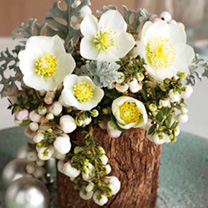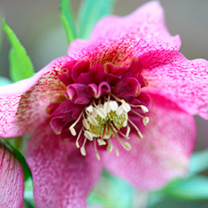Last Updated on November 10, 2021 by the Dobies Horticultural Team
Hellebores must be one of the very best winter plants. With tough, evergreen leaves they simply shrug off frost and snow and push up their stunning flowers regardless.
There are several varieties of hellebore with colours ranging from white, through different shades of pink to purple so deep it is almost black. Hellebores Niger, otherwise known as the Christmas Rose produces startling white flowers, up to 4cm in diameter. As the flowers age, they will take on a pinkish tinge. Enjoy these blooms for a short while but then remove them to make way for fresh new white blooms to emerge.
Clump forming and happy to grow in shade Hellebores Niger will grow well beneath deciduous trees. The evergreen leaves are large and dark green and any old ones can be removed in late autumn to make room for the flower buds to push through.
The Perfect Gift?
The Christmas Rose features in several myths and legends with perhaps the most charming being that concerning a young shepherdess called Madelon. Legend tells us that Madelon was tending her flock one cold winter night when she saw three wise men pass by carrying their gifts to the baby Jesus. Being a poor shepherdess Madelon wept because she had nothing to give to Jesus. However, as her tears fell to the ground a plant appeared with beautiful white flowers – the Christmas Rose. A hovering angel parted the snow to show Madelon that she now had a flower to give as a gift.
Hellebores is in fact poisonous so perhaps not the best gift for a baby. The name comes from the Greek “hellein” meaning food and “bora” meaning kill. As with many poisons hellebores were used in ancient times as medicine. Indeed, myth has it that an overdose of medication containing hellebores resulted in the death of Alexander the Great.


